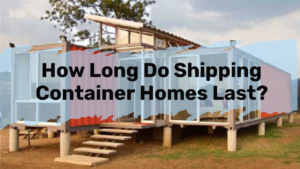Hanging Vegetable Garden
I am not a gardener of any kind, but I always found hanging baskets to be a beautiful way to display flowers and plants. They add a variety of color and fragrance to areas of your home, like a balcony, porch or patio, that might otherwise be plain and boring.
And now the thought of having a hanging vegetable garden has my mouth watering! For those of you who always wanted to grow your own vegetables but had limited space, there is no excuse now – hanging vertical gardens are the way to go!
Why Are Hanging Vegetable Gardens a Great Idea?
It is a perfect solution for those who love to garden, but have small spaces because they live in an apartment or home without a backyard.
With hanging gardens, you can grow vegetables by utilizing vertical space, whether you choose to have one basket or multi-tiered baskets.
By having a vertical vegetable garden you can also avoid pests since your vegetables are elevated and not planted in the ground.
Some other hanging vegetable garden ideas is to mix and match some vegetables and herbs in a hanging basket and position it near your kitchen for easy access.

You just need to have a sturdy, overhead anchor point, like a ceiling joist, post or wall stud and the right hardware, like a ceiling hook, extension S-hook, hanger bracket, etc.
Things To Consider When Starting Your Hanging Vegetable Garden …
Just like growing and planting your vegetable garden in the ground, there are similar gardening methods to work on when starting your hanging gardens. Instead of preparing garden beds for seeds or seedlings, garden baskets are prepped to create a hanging vegetable garden.
If you like DIY projects, you can make your own hanging basket garden. Just make sure that you have some sort of guide and purchase the right materials. Let’s look at what things to consider when making a hanging garden for vegetables:

Ingredients to look for: peat – has light acidity and helps with conserving moisture; vermiculite or perlite – aids in drainage and texture of soil; and compost – adds nutrients, preserves moisture, promotes bacteria and fungi, suppresses weeds.


What Vegetables Can You Grow In Hanging Baskets?
You would be surprised at how many different types of fruits and vegetables can be grown in hanging baskets. Placement and types of baskets play important roles. Some vegetables need a lot of heat and sunlight, while others prefer lower light. Even small vegetables need at least a gallon pot/basket/container to have enough space to grow well.
Some vegetables, like green beans, peppers, and tomatoes do better in upside down hanging pots or planters. The vegetables grow out of the bottom of the basket/pot, lessening any bending of stems and helps the vegetables receive nutrients and moisture.
Here are some of the more common, popular and/or favorite vegetables found in hanging gardens:
They can even grow indoors, if they can get 6 to 8 hours of sunlight every day. After three or four years, you will have to replace your strawberry plants since they will stop producing fruit.


Sunny areas are good for greens, however, there are those like spinach, Swiss chard and other lettuces that are okay in some shade.
You can also plant other smaller vegetables such as: peppers, beans, cucumbers, shallots, pearl onions, spring onions, radishes, etc. These vegetables can grow in small to large container gardens. They are not too heavy, will not break the baskets and don’t require a lot of space to grow.


